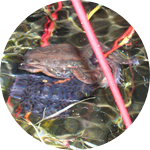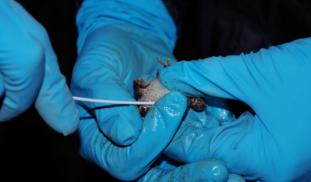Please wait...
About This Project
We're currently studying a population of the common midwife toad (Alytes obstetricans) in Cambridge, England. The species is non-native and our current goal is to screen the population for the amphibian chytrid fungus (Batrachochytrium dendrobatidis), which has been implicated in amphibian population declines worldwide. As an introduced species, the disease is one of the biggest threats to our native herpetofauna.
More Lab Notes From This Project

Browse Other Projects on Experiment
Related Projects
How do polar bears stay healthy on the world's worst diet?
Polar bears survive almost entirely on seal fat. Yet unlike humans who eat high-fat diets, polar bears never...
Uncovering hidden insect diversity associated with a likely undescribed gall-forming midge
Does a likely undescribed species of gall-forming midge (pers. comm. Ray Gagné) on Eriodictyon plants (Yerba...
Macrofungi of the California archipelago
The eight islands of the California Archipelago are a well-studied biodiversity hotspot — but we know almost...





